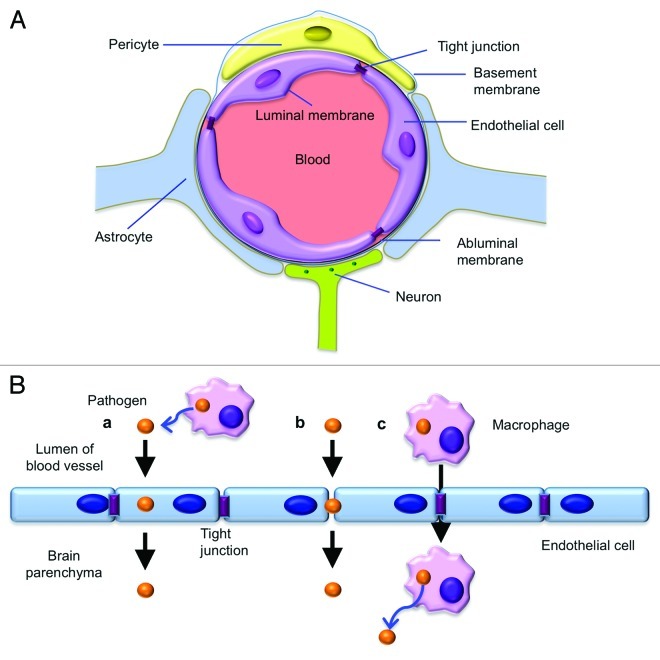Figure 1. (A) The illustration of the blood-brain barrier (BBB). The BBB is a multi-cellular structure at the interface of circulation and the central nervous system. It is composed of brain microvascular endothelial cells, astrocytes, pericytes and neurons. The main function of the BBB is to maintain the neural microenvironment by regulating the changes of the levels of molecules in the blood, and protect the brain by blocking the entry of toxins and microorganisms that are circulating in the blood. (B) Pathogens can cross the BBB transcellularly, paracellularly and/or in infected phagocytes (the Trojan horse mechanism). In the transcellular traversal model (a), pathogens across the barrier by direct endocytosis of brain microvascular endothelial cells without disruption of intercellular tight junction. In the Paracellular traversal model (b), pathogens penetrate between barrier cells through loosen tight junction, and may or may not lead to tight-junction disruption. The “Trojan horse” mechanism (c) involves phagocytic microbial penetration of the barrier cells using transmigration within infected phagocytes. Pathogen cells are released from macrophages after penetration.

An official website of the United States government
Here's how you know
Official websites use .gov
A
.gov website belongs to an official
government organization in the United States.
Secure .gov websites use HTTPS
A lock (
) or https:// means you've safely
connected to the .gov website. Share sensitive
information only on official, secure websites.
